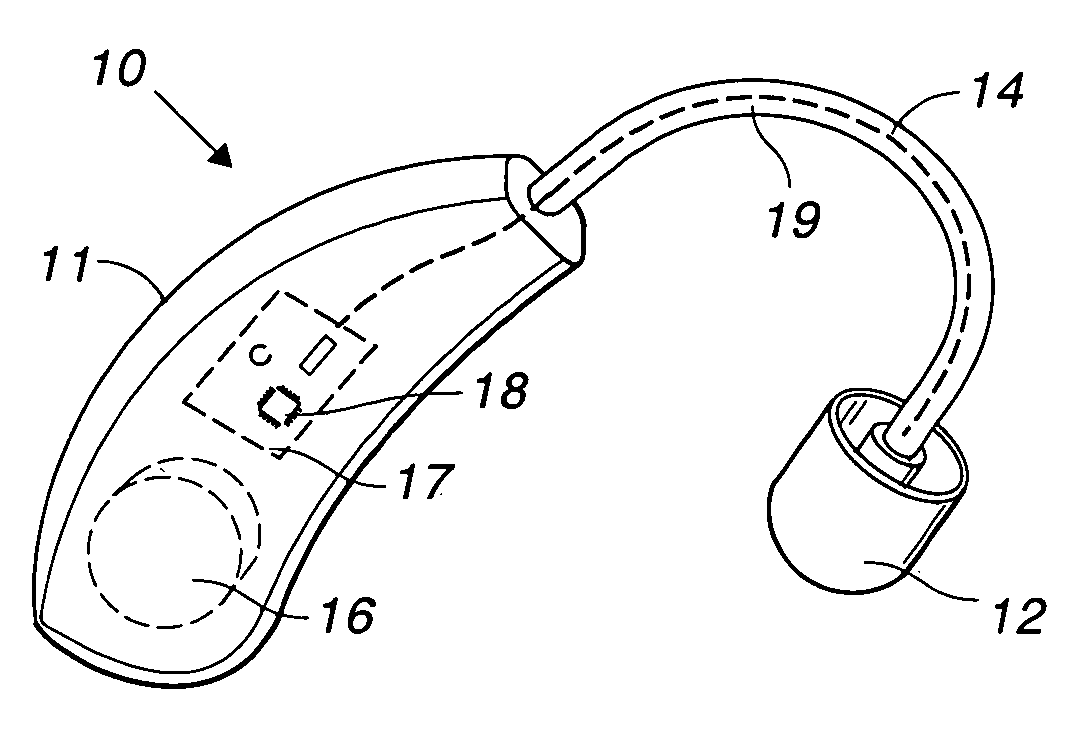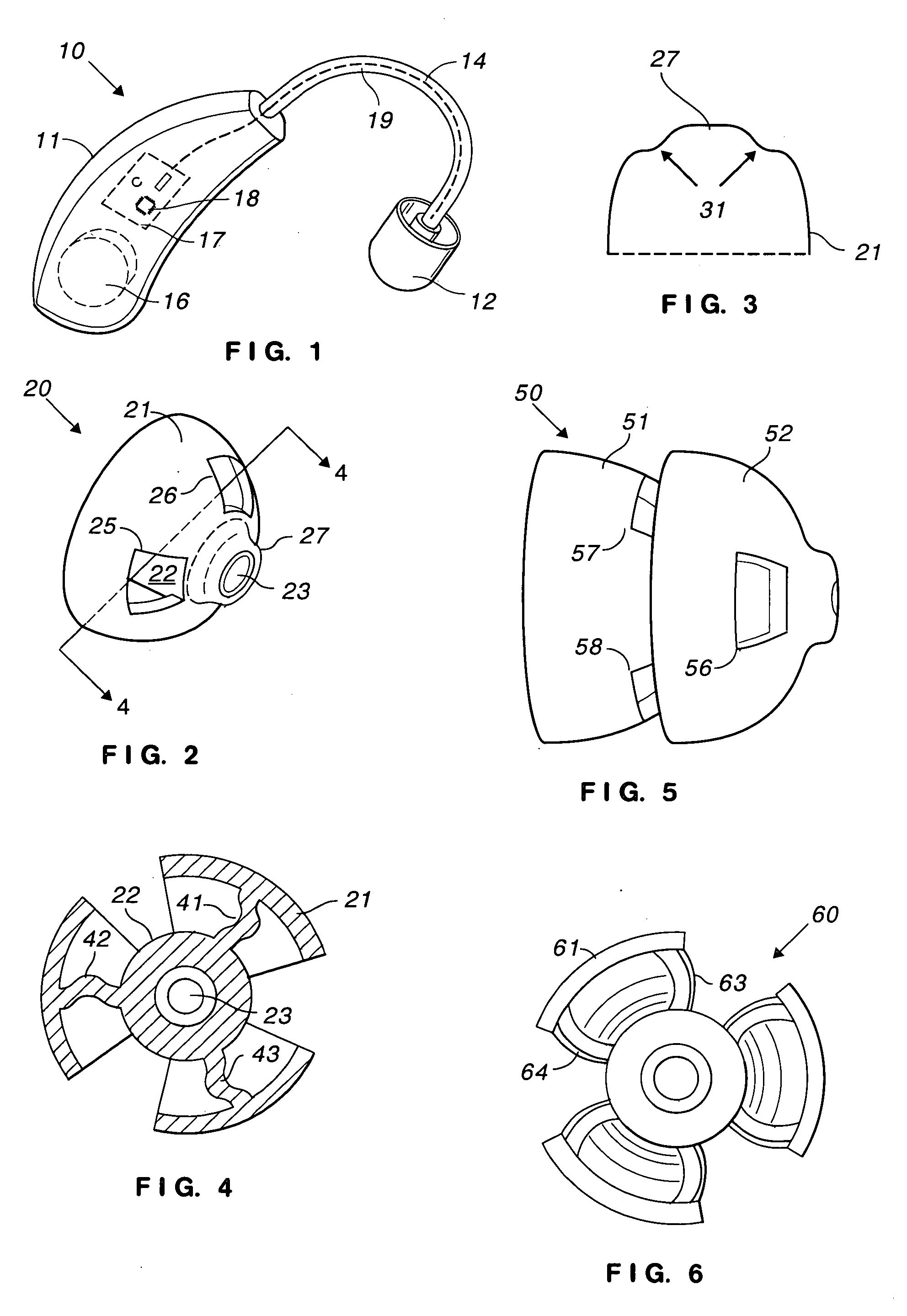Open tip for hearing aid
a technology of open tip and hearing aid, which is applied in the field of hearing aids, can solve the problems of clumsy and pedantic “electroacoustic transducer” and feedback, and achieve the effect of reducing the accumulation of debris
- Summary
- Abstract
- Description
- Claims
- Application Information
AI Technical Summary
Benefits of technology
Problems solved by technology
Method used
Image
Examples
Embodiment Construction
[0021]In FIG. 1, hearing aid 10 includes housing 11 coupled to earpiece 12 by cable 14. Within housing 11 are battery 16 and circuit board 17. Circuit board 17 includes programmed microprocessor 18 and other circuitry for processing audio signals, charging battery 16, and other functions. A speaker (not shown) is located in earpiece 12 and a microphone (not shown) is located in housing 11. The speaker is coupled to circuit board 17 by wires 19 in cable 14.
[0022]In FIG. 2, open ear tip 20 includes dome 21 coupled to hollow central body 22, preferably formed as a single piece. Body 22 is mechanically coupled to a speaker (not shown) and conveys sound along tubular passageway 23 to the ear canal. Dome 21 defines a plurality of apertures, such as apertures 25 and 26, which are preferably located regularly about the longitudinal axis defined by passageway 23. On the top of dome 21 is protrusion 27 that provide deflection for debris way from passageway 23 toward the wall of the ear canal ...
PUM
 Login to View More
Login to View More Abstract
Description
Claims
Application Information
 Login to View More
Login to View More - R&D
- Intellectual Property
- Life Sciences
- Materials
- Tech Scout
- Unparalleled Data Quality
- Higher Quality Content
- 60% Fewer Hallucinations
Browse by: Latest US Patents, China's latest patents, Technical Efficacy Thesaurus, Application Domain, Technology Topic, Popular Technical Reports.
© 2025 PatSnap. All rights reserved.Legal|Privacy policy|Modern Slavery Act Transparency Statement|Sitemap|About US| Contact US: help@patsnap.com


